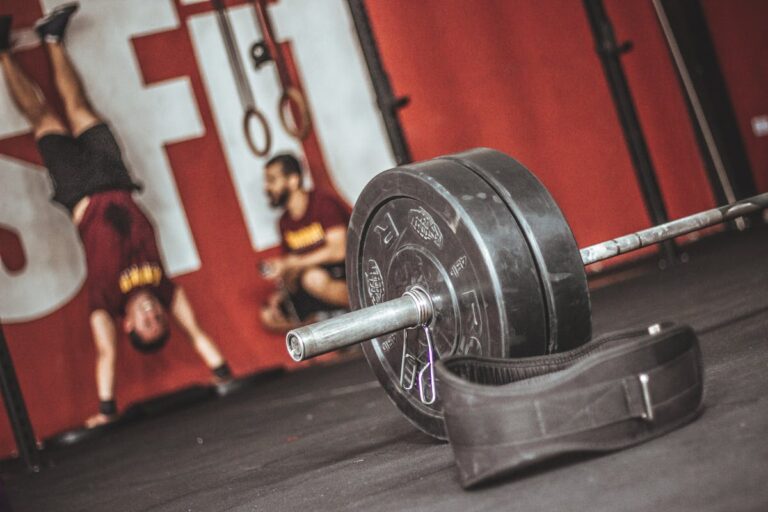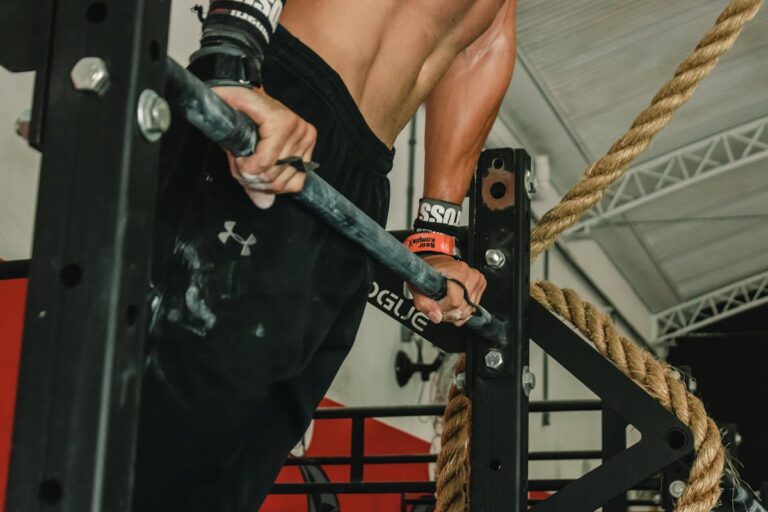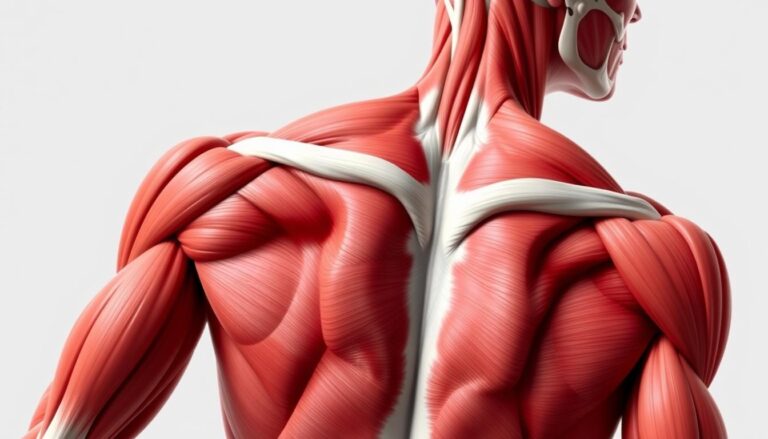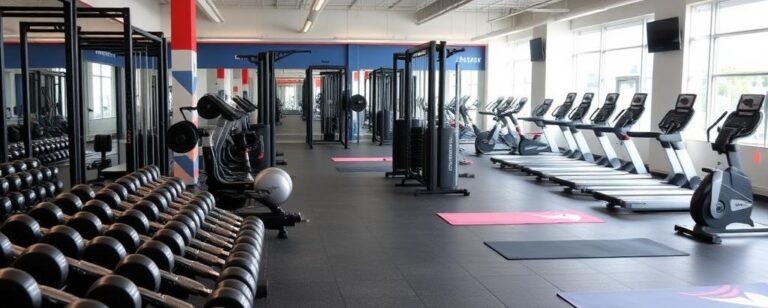Effective Mountainside Fitness Workout Plans for Every Level
Effective Mountainside Fitness Workout Plans for every level. Join our mountainside fitness classes and find the perfect mountainside fitness workout plan for you today!
Table of Contents
Introduction: The Benefits of Mountainside Fitness
Mountainside fitness provides a unique blend of physical, mental, and emotional benefits. This form of exercise challenges individuals in ways that typical gym workouts cannot, leveraging the natural landscape to enhance overall well-being. Here are some key benefits of engaging in mountainside fitness:
- Enhanced Cardiovascular Health
- Mountainside workouts such as hiking, trail running, and climbing require sustained effort, which elevates the heart rate.
- These activities improve heart health by increasing cardiovascular endurance and reducing the risk of heart disease.
- Improved Muscle Strength and Tone
- Navigating the uneven terrain of mountains requires the engagement of various muscle groups simultaneously.
- Leg muscles, the core, and even upper body muscles get a comprehensive workout, leading to improved muscle tone and strength.
- Increased Caloric Burn
- The combination of altitude and challenging terrain results in a higher caloric expenditure.
- Mountainside fitness activities facilitate weight loss and help maintain a healthy weight more effectively than flat terrain exercises.
- Better Mental Health
- Exercising in natural settings has been shown to reduce stress, anxiety, and symptoms of depression.
- The combination of physical exertion and exposure to nature releases endorphins, improving mood and overall mental well-being.
- Enhanced Coordination and Balance
- The unpredictable nature of mountainside terrain requires enhanced coordination and balance.
- Activities like rock climbing and trail running help develop agility and proprioception, reducing the risk of falls and improving overall stability.
- Increased Lung Capacity
- Working out at higher altitudes where the air is thinner challenges the respiratory system.
- This leads to improved lung capacity and better oxygen utilization, enhancing overall endurance and performance.
- Greater Exposure to Vitamin D
- Outdoor exercise ensures exposure to natural sunlight, which is a vital source of Vitamin D.
- Adequate Vitamin D levels are essential for bone health, immune function, and overall well-being.
In conclusion, mountainside fitness offers multifaceted benefits that go beyond traditional workouts. It not only enhances physical health but also contributes to mental and emotional well-being, making it an excellent choice for individuals seeking a holistic fitness approach.

Assessing Your Current Fitness Level
Evaluating one’s current fitness level is crucial for designing an effective mountainside workout plan. This assessment helps in setting realistic goals and tailoring workouts to individual needs.
Why Assess Fitness Levels?Effective Mountainside Fitness Workout Plans for Every Level
Understanding the current fitness level ensures that the workouts are neither too easy nor too strenuous. It enables individuals to track progress and make necessary adjustments.
Methods of Assessment
- Cardiovascular Endurance:
- The Cooper Test: Run as far as possible in 12 minutes. The distance covered offers an indication of cardiovascular endurance.
- Step Test: Step up and down on a 12-inch bench for three minutes, then measure heart rate after a short rest.
- Muscular Strength:
- Push-up Test: Perform as many push-ups as possible without rest to gauge upper body strength.
- Sit-up Test: Count the number of sit-ups completed in one minute to measure core strength.
- Flexibility:
- Sit and Reach Test: Sit with legs extended and reach forward as far as possible. Measure the distance between fingertips and toes.
- Shoulder Flexibility Test: Reach over the shoulders and behind the back to touch fingers. Assess the flexibility based on the distance fingertips reach.
- Body Composition:
- BMI (Body Mass Index): Use height and weight to calculate. BMI ranges indicate different weight categories.
- Body Fat Percentage: Utilize calipers or bioelectrical impedance devices to measure.
Gathering Baseline Data
Maintain a fitness journal to record initial results. Note the date, time, and specific conditions during each test to ensure consistency in future assessments.
“A comprehensive assessment sets the stage for a personalized and effective mountainside workout plan.”
Interpreting Results
Analyze the gathered data to understand strengths and areas that need improvement. This information aids in customizing the workout plan to boost overall fitness.
Setting Goals
Establish SMART (Specific, Measurable, Achievable, Relevant, Time-bound) goals based on the assessment. These goals provide direction and motivation throughout the fitness journey.
Reassessment
Reassess fitness levels periodically (e.g., every 4-6 weeks) to monitor progress and adjust the workout plan as needed. Consistent reassessment helps in identifying plateaus and making informed changes.
By thoroughly assessing fitness levels, individuals can embark on a well-rounded and effective mountainside fitness regimen tailored to their unique needs and goals.
Beginner Workout Plans: Starting Your Fitness Journey
Starting a fitness journey can be both exciting and challenging. Mountainside Fitness offers beginner workout plans designed to set individuals on the right path. These programs focus on building foundational strength, improving flexibility, and increasing cardiovascular endurance.
Key Components of Beginner Plans
Beginner workout plans should include:
- Warm-Up Sessions
- Light jogging or brisk walking for 5-10 minutes.
- Dynamic stretches like arm circles, leg swings, and torso twists to prepare muscles.
- Strength Training
- Bodyweight Exercises: Push-ups, squats, lunges, and planks.
- Light Weights: Beginner-friendly dumbbells for exercises like bicep curls and shoulder presses.
- Cardiovascular Workouts
- Low-Impact: Stationary cycling, elliptical machines, or swimming.
- Moderate-Intensity: Brisk walking or light jogging for 20-30 minutes.
- Flexibility and Cool Down
- Static stretching targeting all major muscle groups post workout.
- Yoga poses such as Child’s Pose, Downward Dog, and Cat-Cow.
Sample Weekly Workout Schedule
Monday:
- Warm-up
- Upper body strength training (push-ups, shoulder press)
- 20-minute brisk walk
- Cool down
Wednesday:
- Warm-up
- Lower body strength training (squats, lunges)
- 20-minute stationary cycling
- Cool down
Friday:
- Warm-up
- Full-body workout (circuit of bodyweight exercises)
- 20-minute light jogging
- Cool down
Sunday:
- 30-minute yoga session focusing on flexibility
Additional Tips for Beginners
- Consistency: Aim to work out at least three times a week.
- Hydration: Drink plenty of water before, during, and after workouts.
- Nutrition: Eat balanced meals rich in protein, vegetables, and whole grains.
- Rest: Ensure adequate sleep to allow muscles to recover.
It’s vital for beginners to listen to their bodies. Rest if feeling overly fatigued, and consult with fitness experts at Mountainside Fitness if uncertainties arise. The initial goal should be to establish a regular routine and gradually increase workout intensity to build confidence and physical capacity.
Intermediate Workout Plans: Building Strength and Stamina
Intermediate workout plans are designed for those who have moved beyond the beginner stage and are looking to increase their strength and stamina. These routines often incorporate a mix of resistance training, cardiovascular exercises, and flexibility movements.
Resistance Training
- Compound Exercises
- Focus on multi-joint exercises like squats, deadlifts, bench presses, and rows. These work multiple muscle groups simultaneously and are effective for building overall strength.
- Incorporate 3 sets of 8-12 repetitions, resting for 1-2 minutes between sets.
- Accessory Exercises
- Include movements that target smaller muscle groups or provide additional challenge. Examples are bicep curls, tricep dips, and lunges.
- Perform 2-3 sets of 12-15 reps, with shorter rest periods of 30-45 seconds.
Cardiovascular Training
- High-Intensity Interval Training (HIIT)
- Alternate between high-intensity exercises like sprinting or jumping jacks and low-intensity recovery periods.
- Aim for a total of 20-30 minutes. For example, 20 seconds of sprinting followed by 40 seconds of walking, repeated for multiple cycles.
- Steady-State Cardio
- Engage in 30-45 minutes of consistent moderate-intensity cardio, such as jogging, cycling, or swimming.
- This helps in building endurance and improving cardiovascular health.
Flexibility and Mobility
- Dynamic Stretching
- Use stretching exercises that involve movement to prepare muscles and joints for more vigorous activities. Examples include leg swings and arm circles.
- Spend 5-10 minutes on these stretches, focusing on the major muscle groups.
- Static Stretching
- Post-workout, hold stretches like hamstring stretches, calf stretches, or shoulder stretches for 15-30 seconds each.
- This helps in relieving muscle tension and preventing injuries.
Weekly Schedule Example
- Monday: Upper Body Strength
- Compound and accessory exercises focused on chest, back, shoulders, and arms.
- Tuesday: Cardio and Core
- HIIT session followed by core exercises like planks and Russian twists.
- Wednesday: Lower Body Strength
- Compound and accessory exercises aimed at quads, hamstrings, calves, and glutes.
- Thursday: Active Recovery
- Light cardio, such as brisk walking or cycling, combined with dynamic stretching.
- Friday: Full Body Strength
- A mix of upper and lower body compound exercises with some accessory movements.
- Saturday: Extended Cardio
- A longer session of steady-state cardio, like a 45-minute run or swim.
- Sunday: Rest
- Complete rest or light stretching to allow the body to recover fully.
Advanced Workout Plans: Pushing Your Limits
Advanced workout plans are designed for those who already have a solid fitness foundation and are looking to escalate their performance. These plans aim to challenge the body in new ways, pushing physical and mental limits to achieve peak fitness. Here, intensity, diversity, and precision are key components.

Key Components of Advanced Plans
- Periodization: Structuring workouts into cycles to maximize performance and recovery.
- Microcycles: Weekly variations.
- Mesocycles: Monthly focus shifts.
- Macrocycles: Seasonal or annual goals.
- Complex Movements: Emphasizing multi-joint exercises that engage multiple muscle groups.
- Examples:
- Deadlifts
- Olympic lifts
- Plyometric drills
- Examples:
- Intensity Techniques: Advanced techniques to push beyond plateaus.
- Supersets: Performing two exercises back-to-back with no rest.
- Drop Sets: Reducing weight after muscle fatigue to continue sets.
- Negatives: Focusing on the eccentric part of the exercise.
- Advanced Cardio: Integrating high-intensity interval training (HIIT) for cardiovascular conditioning.
- Sprint Intervals: Short bursts of speed followed by recovery.
- Circuit Training: Combining strength exercises with cardio moves for enhanced endurance.
Sample Advanced Workout Schedule
Monday: Strength and Power
- Warm-up: Dynamic stretches
- Main Set:
- Deadlifts: 4 sets of 6 reps
- Bench Press: 4 sets of 5 reps
- Power Cleans: 3 sets of 3 reps
- Cool-down: Foam rolling and stretching
Tuesday: Cardio and Core
- Warm-up: Light jogging
- Main Set:
- HIIT: 30-second sprints, 30-second rest, 10 rounds
- Core Circuit: Planks, Russian twists, Leg raises
- Cool-down: Walking and deep breathing exercises
Wednesday: Rest or Active Recovery
- Activities: Light yoga, swimming, or a brisk walk
Thursday: Functional Training
- Warm-up: Agility drills
- Main Set:
- Box jumps: 3 sets of 10 reps
- Medicine ball throws: 3 sets of 8 reps
- TRX rows and push-ups
- Cool-down: Static stretching
Friday: Upper Body Focus
- Warm-up: Arm swings and shoulder rotations
- Main Set:
- Pull-ups: 4 sets to failure
- Dumbbell rows: 3 sets of 8 reps each side
- Dips: 3 sets of 15 reps
- Cool-down: Stretching major upper body muscles
Nutritional Considerations
A diet tailored to advanced workouts is crucial. Key points include:
- Protein Intake: Essential for muscle repair and growth.
- Sources: Lean meats, whey protein, legumes.
- Carbohydrates: Fuel for high-intensity activities.
- Sources: Whole grains, fruits, vegetables.
- Hydration: Vital for performance and recovery.
- Recommendation: At least 3 liters of water daily.
Implementing these advanced plans and nutritional strategies will help individuals make significant gains in their fitness journey.
Cardio Routines for All Levels
Cardio exercises are crucial for enhancing cardiovascular health, boosting endurance, and burning calories. Mountainside Fitness ensures a variety of routines suitable for beginners, intermediate athletes, and advanced fitness enthusiasts.
Beginner Level
For those new to fitness, starting with low-impact cardio is essential to prevent injury and build a foundation.
- Walking: Aim for a 30-minute walk at a moderate pace. Increase speed gradually.
- Stationary Bike: Pedal for 15 minutes on a low resistance setting. Gradually increase time.
- Elliptical Machine: Set resistance to the lowest level and move for 10-15 minutes.
Tip: Begin with shorter durations and increase time as endurance builds.
Intermediate Level
Intermediate routines focus on increasing intensity and incorporating variety to challenge the body.
- Jogging: Target 20-30 minutes at a moderate pace. Introduce intervals of faster paces.
- Cycling: Ride a stationary bike or cycle through hilly terrains for 30-45 minutes.
- Group Classes: Join aerobics, Zumba, or spin classes for a structured workout.
Tip: Add variety to routines to maintain motivation and avoid plateauing.
Advanced Level
Advanced routines are designed for individuals looking to push their limits and achieve peak fitness levels.
- Running: Engage in 45-60 minutes of running, incorporating sprints and hills.
- HIIT (High-Intensity Interval Training): Alternate between high-intensity exercises and short rest periods for a total of 20-30 minutes.
- Stair Climbing: Utilize stair machines or actual stairs for 30 minutes. Increase pace and resistance for added intensity.
Tip: Ensure proper warm-up and cool-down to prevent injuries and aid recovery.
Overall, Mountainside Fitness provides a comprehensive range of cardio routines suitable for members at any fitness level. With structured plans and progression tips, achieving cardiovascular fitness goals becomes accessible and manageable for everyone.
Strength Training Essentials
Strength training is vital for building muscle mass, improving endurance, and boosting overall fitness. It benefits individuals across all fitness levels. Here are the key elements to consider:
Equipment
- Free Weights: Dumbbells, barbells, and kettlebells offer flexibility and a range of exercises.
- Machines: Provide stability and are often easier for beginners to use correctly.
- Resistance Bands: Versatile and useful for adding variety to workouts.
- Body Weight: Push-ups, squats, and pull-ups require no additional equipment.
Core Exercises
- Squats: Target the quadriceps, hamstrings, and glutes.
- Deadlifts: Strengthen the lower back, glutes, and hamstrings.
- Bench Press: Focus on the chest, triceps, and shoulders.
- Pull-Ups: Engage the upper back, biceps, and forearms.
- Planks: Improve core stability and strength.
Rep and Set Guidelines
- Beginners: Should start with 2-3 sets of 8-12 reps per exercise.
- Intermediate: Can progress to 3-4 sets of 6-10 reps.
- Advanced: Often use 4-5 sets of 4-8 reps for maximum strength gains.
Rest and Recovery
- Between Sets: 30 seconds to 1 minute for muscular endurance; 2-3 minutes for strength.
- Between Workouts: At least 48 hours rest for muscle groups to recover and grow.
Form and Technique
Proper form is crucial to prevent injury and ensure the effectiveness of the exercises:
- Posture: Maintain a neutral spine and engage the core.
- Range of Motion: Move through the full range of motion to work muscles effectively.
- Breathing: Inhale during eccentric (lowering) phase, exhale during concentric (lifting) phase.
Progression
Progress by gradually increasing weight, reps, or sets. Diversify exercises to challenge muscles in different ways. Periodically testing one’s max lifts can help gauge progress and set new goals.
Safety Tips
- Warm-Up: Always start with a dynamic warm-up to prepare muscles.
- Spotter: Use a spotter for heavy lifts like the bench press.
- Listen to Your Body: Avoid overtraining and never push through sharp pain.
Strength training, when done correctly, can drastically improve physical performance and overall health, making it a cornerstone of an effective mountainside fitness plan.
Flexibility and Mobility Workouts
Flexibility and mobility play crucial roles in achieving well-rounded fitness, minimizing the risk of injury, and enhancing overall performance. At Mountainside Fitness, tailored workouts for flexibility and mobility are accessible to members of all fitness levels. Below are key components to consider in these workout plans:
Warm-Up Essentials
- Dynamic Stretching: Engage in movements such as leg swings, arm circles, and torso twists to raise the heart rate and prepare muscles for exercise.
- Foam Rolling: Use a foam roller to release muscle tightness and improve blood flow, focusing on areas such as the calves, hamstrings, and back.
Core Flexibility Exercises
- Static Stretching: Perform exercises like standing quadriceps stretches, hamstring stretches, and calf stretches, holding each position for 15-30 seconds.
- Yoga Poses: Incorporate poses such as downward-facing dog, cobra pose, and child’s pose to enhance flexibility and relaxation.
- Pilates Movements: Utilize Pilates exercises like the saw, spine stretch forward, and leg circles to improve flexibility and core strength.
Key Mobility Drills
- Joint Circles: Practice controlled rotations for ankles, knees, hips, shoulders, and wrists to increase joint range of motion.
- Hip Mobility: Perform exercises such as hip circles, groiners, and lunges with a twist to enhance hip flexibility and stability.
- Shoulder Mobility: Engage in stretches and drills like shoulder dislocates, wall slides, and band pull-aparts to improve shoulder function.
Cool-Down Techniques
- Static Stretching Post-Workout: Revisit static stretching exercises to help muscles relax and reduce post-workout soreness.
- Deep Breathing: Implement deep breathing techniques to promote relaxation and aid in recovery.
Structured Flexibility/Mobility Classes
Mountainside Fitness offers structured classes such as:
- Yoga: Classes focusing on enhancing mind-body connection while improving flexibility.
- Pilates: Sessions that strengthen the core and enhance overall body flexibility.
- Mobility Clinics: Specialized classes designed to address specific mobility concerns and provide personalized guidance.
Overall, incorporating flexibility and mobility exercises into a regular fitness routine at Mountainside Fitness can lead to improved posture, reduced muscle tension, and enhanced athletic performance. These elements are essential for those looking to achieve a balanced and effective fitness plan.
Incorporating Outdoor Activities for Added Fun
Enhancing a workout routine with outdoor activities can add an element of excitement and provide additional health benefits. Incorporating varied terrain, natural elements, and fresh air can be invigorating for all fitness levels. Mountainside environments offer unique opportunities that traditional indoor settings cannot match.
Trail Running and Hiking
- Trail Running:
- Unsurpassed in boosting cardiovascular health.
- Stabilizes joints due to uneven terrain.
- Increases agility and coordination.
- Hiking:
- Lower body muscle strengthening.
- Improves endurance.
- Enhances mental well-being through nature exposure.
Rock Climbing
Rock climbing is an excellent full-body workout that improves core strength, flexibility, and mental focus.
- Benefits:
- Stronger arms, legs, and core.
- Enhanced problem-solving skills.
- Increased range of motion.
- Options:
- Bouldering for beginners: shorter routes without ropes.
- Top-rope climbing: harnessed climbs for safety and support.
Mountain Biking
Mountain biking is a dynamic way to build cardiovascular fitness, balance, and muscle strength.
- Advantages:
- High-calorie burning.
- Builds core and leg muscles.
- Develops bike-handling skills.
- Types:
- Cross-country for endurance.
- Downhill for thrill-seekers.
Yoga in Nature
Practicing yoga outdoors can deepen relaxation and connect individuals with their surroundings.
- Positives:
- Enhanced stress relief.
- Improved concentration and mindfulness.
- Natural grounding from direct contact with the earth.
- Recommendations:
- Sunset yoga for serene finishes to the day.
- Sunrise sessions for invigorating starts.
Swimming in Natural Springs or Lakes
Outdoor swimming can be refreshing and therapeutic.
- Employs:
- Full-body muscle engagement.
- Low-impact cardiovascular training.
- Resistance training from water.
Group Activities
Group activities can make fitness routines more enjoyable and foster a sense of community.
- Options:
- Group hikes or runs.
- Team-based competitions like orienteering.
- Group meditation or mindfulness walks.
Regularly engaging in these outdoor activities can result in improved fitness levels, mental well-being, and overall health. Individuals are encouraged to try various activities to determine what best fits their preferences and fitness goals.
Balancing Your Diet with Your Fitness Goals
Balancing one’s diet with fitness goals is crucial for achieving optimal results. Different fitness levels and goals require varying nutritional strategies. Understanding these requirements can help maximize progress and overall well-being.
Understanding Macronutrients
Macronutrients play a vital role in fueling the body for physical activities. They consist of:
- Proteins: Essential for muscle repair and growth.
- Carbohydrates: Provide energy for workouts.
- Fats: Support cell function and energy storage.
Customizing Diet by Fitness Levels
Each fitness level demands a particular dietary focus:
- Beginners:
- Protein: Moderate intake to help build muscle (0.8-1g per pound of body weight).
- Carbohydrates: Sufficient to fuel beginner-level workouts (45-55% of daily calories).
- Fats: Necessary for energy and hormone regulation (20-30% of daily intake).
- Intermediate:
- Protein: Higher intake due to increased muscle mass and workout intensity (1-1.2g per pound).
- Carbohydrates: Increased to support longer workout sessions (50-60% of daily calories).
- Fats: Maintain a balanced intake for sustained energy (20-30%).
- Advanced:
- Protein: Essential for muscle maintenance and recovery (1.2-1.5g per pound).
- Carbohydrates: Critical for high-intensity and endurance activities (55-65% of daily intake).
- Fats: Optimal levels for energy density and metabolic functions (20-25%).

Timing and Portion Control
When balancing diet with fitness goals, timing and portion control are key:
- Pre-Workout Meals: Focus on carbohydrates and moderate protein.
- Post-Workout Meals: Prioritize protein for recovery, along with carbs to replenish glycogen stores.
- Snacks: Incorporate protein-rich snacks between meals to maintain muscle synthesis.
Hydration and Micronutrients
Besides macronutrients, hydration and micronutrients are equally important:
- Water: Essential for overall health and peak performance. Aim for 8-10 glasses per day.
- Vitamins and Minerals: Ensure adequate intake of vitamins A, C, D, E, and minerals like calcium, iron, and potassium.
Strategic Supplementation
Certain supplements can complement a balanced diet:
- Protein powders: Convenient for hitting daily protein targets.
- Creatine: Enhances strength and muscle mass.
- BCAAs: Aid in muscle recovery and reduce soreness.
In conclusion, individuals must tailor their diet based on their specific fitness level and goals. By understanding nutritional needs and timing, one can effectively support their workout regimen and achieve desired results.
Tracking Progress and Adjusting Your Plan
Effective workout plans require continuous monitoring and adaptation to ensure they align with individual fitness goals and progress. Regular assessments and adjustments can help in maintaining motivation and avoiding plateaus.
Monitoring Progress
To track progress:
- Use a Fitness Journal: Document workout sessions, including exercises, sets, reps, and weights. Logging perceived exertion and energy levels adds context.
- Measure Key Metrics: Regularly measure body weight, body fat percentage, and muscle circumference to gauge changes.
- Performance Benchmarks: Track improvements in endurance, strength, flexibility, and overall performance.
Tools and Technology
Leverage technology for more precise tracking:
- Fitness Apps: Utilize mobile applications that track workouts, nutrition, and progress over time.
- Wearable Devices: Use smartwatches and fitness trackers to monitor heart rate, steps, and calories burned.
- Online Platforms: Join online communities for support and access to shared resources.
Expected Timelines for Progress
Set realistic timelines for achieving fitness goals:
- Short-term (1-3 months): Improved energy levels, minor strength gains, and slight changes in body composition.
- Mid-term (3-6 months): Noticeable muscle growth, fat loss, and performance enhancements.
- Long-term (6+ months): Significant body transformation, advanced fitness levels, and sustained health benefits.
Adjusting the Plan
Adapt the workout plan based on the tracked progress:
- Increase Intensity: If initial goals are met, gradually increase the weight, resistance, or duration.
- Modify Exercises: Rotate or substitute exercises to target different muscle groups or to address weaknesses.
- Rest and Recovery: Incorporate rest days and focus on recovery to prevent overtraining.
- Nutrition Adjustments: Align dietary intake with fitness goals, such as increasing protein for muscle gain or adjusting caloric intake for weight loss.
Seeking Professional Guidance
For optimal adjustments:
Consider consulting a fitness professional or personal trainer. Their expertise can offer personalized recommendations and ensure workouts remain effective and safe.
Regular Reevaluation
Schedule periodic reviews of the workout plan:
- Monthly Check-ins: Evaluate progress and make minor tweaks.
- Quarterly Overhaul: Assess overall progress and make more significant adjustments if necessary.
- Annual Review: Reflect on yearly achievements and set new long-term goals.
Effective monitoring and timely adjustments result in a dynamic and responsive fitness plan that evolves with individual progress, ensuring continuous improvement and sustainable results.
Staying Motivated: Tips and Tricks
Achieving consistent progress in one’s fitness journey is often a matter of maintaining motivation. Here are several strategies to help anyone stay focused and driven on their mountainside fitness workout plans.
- Set Small, Achievable Goals
- Daily Goals: Breaking larger goals into smaller, daily objectives can make the overall plan feel more manageable.
- Weekly Milestones: Celebrating small victories every week keeps morale high and acknowledges progress.
- Keep a Workout Journal
- Track Progress: Documenting each workout, including reps, sets, and improvements, provides a tangible record of progress.
- Reflect on Challenges: Noting any difficulties or setbacks can help identify areas for improvement and foster resilience.
- Join a Community
- Group Workouts: Participating in group activities or fitness classes can add a social element to exercise, making it more fun and engaging.
- Online Forums: Connecting with like-minded individuals online can offer support, advice, and motivation from others pursuing similar goals.
- Hire a Personal Trainer
- Expert Guidance: A personal trainer can provide personalized plans and professional insights to optimize workouts.
- Accountability: Regular check-ins with a trainer hold individuals accountable and ensure a consistent effort.
- Vary Your Routine
- Mix It Up: Incorporating different types of exercises, such as hiking, biking, or even yoga, can prevent boredom and target different muscle groups.
- Seasonal Changes: Adjusting workouts according to the season, like outdoor activities in summer and indoor exercises in winter, adds variety.
- Visualize Success
- Mental Imagery: Imagining completing a challenging run or hike successfully can prep the mind for real-world efforts.
- Vision Board: Creating a visual reminder of goals, such as completing a mountain trail or achieving a fitness milestone, can sustain motivation.
- Reward Yourself
- Non-Food Rewards: Treating oneself to new workout gear or a fun outing after reaching a goal can enhance motivation.
- Rest Days: Scheduling regular rest days is crucial for preventing burnout and maintaining a balanced approach to fitness.
- Consistent Schedule
- Fixed Workout Times: Establishing a routine with fixed times for workouts can make fitness a regular, non-negotiable part of the day.
- Morning vs. Evening: Determining whether morning or evening workouts fit better into one’s lifestyle can promote consistency.
In summary, staying motivated requires a multifaceted approach that incorporates goal-setting, community support, and variety in routines to ensure long-term commitment to fitness goals.
The Importance of Rest and Recovery
Rest and recovery play vital roles in an effective mountainside fitness workout plan. Engaging in intense physical activities at high altitudes exerts additional stress on the body, making recovery indispensable. The physiological processes involved in recovery repair muscle tissues, replenish energy stores, and mitigate fatigue.
Benefits of Adequate Rest and Recovery
- Muscle Repair and Growth: During rest, the body repairs micro-tears in muscle fibers from strenuous activities. This repair process is essential for muscle growth and strength development.
- Energy Restoration: Rest periods allow the body to replenish adenosine triphosphate (ATP) levels, enabling continued high-performance in subsequent workout sessions.
- Injury Prevention: Proper recovery decreases the risk of overuse injuries. Muscles, tendons, and ligaments become more resilient when given adequate time to heal.
- Mental Rejuvenation: Physical rest also assists in mental recovery, reducing the likelihood of burnout and improving overall workout motivation.
Factors Influencing Recovery
- Sleep Quality: Aim for 7-9 hours of sleep per night. High-quality sleep aids in the release of growth hormones, essential for tissue repair and muscle growth.
- Nutrition: Consuming a balanced diet rich in proteins, carbohydrates, and essential fats supports the body’s recovery processes. Post-workout nutrition should include protein and carbs to speed up recovery.
- Hydration: Staying hydrated is crucial, especially at high altitudes where dehydration risks are higher. Proper hydration impacts muscle function and recovery rate.
- Active Recovery: Incorporate light activities such as walking, stretching, and yoga. These can enhance blood circulation and expedite the removal of metabolic waste from muscles.
- Rest Days: Schedule rest days within your workout plan. Rest days allow complete recovery of muscles and prevent chronic fatigue.
Recommended Recovery Practices
- Foam Rolling: Self-myofascial release techniques like foam rolling can reduce muscle soreness and improve flexibility by breaking down scar tissue and enhancing blood flow.
- Massage Therapy: Engaging in periodic massage therapy can alleviate muscle tightness and promote relaxation.
- Cold and Heat Therapy: Alternating between cold and heat applications can reduce inflammation and enhance the healing process.
Rest and recovery should not be viewed as a period of inactivity but as an active, crucial component of an effective fitness regimen. Implementing these recovery strategies can result in consistent performance improvements and sustained long-term gains.
Common Mistakes to Avoid
Embarking on a mountainside fitness journey requires awareness of common pitfalls. Here are some critical mistakes and how to avoid them:
Inadequate Warm-Up
- Skipping Warm-Up: An effective session needs muscles that are prepped. Skipping warm-ups can lead to injuries.
- Insufficient Warm-Up: Warming up for less than 5-10 minutes may not be enough. Ensure every major muscle group is engaged.
Poor Hydration
- Ignoring Hydration: Exercising on mountain terrains is intense. Dehydration can result in fatigue and dizziness.
- Overdrinking: Consuming too much water at once can lead to discomfort. Take small sips frequently to maintain hydration balance.
Incorrect Form
- Posture Errors: Poor posture stresses muscles and joints improperly. Observe correct form to prevent injuries.
- Lack of Guidance: Joining a class or consulting a trainer ensures exercises are executed correctly.
Neglecting Nutrition
- Skipping Meals: Nutrition fuels workouts and aids recovery. Missing meals can lead to energy depletion.
- Inadequate Protein: Protein helps in muscle repair. Ensure adequate intake to support muscle building.
Overtraining
- Ignoring Rest Days: Muscles need time to recover and grow. Skipping rest days can lead to fatigue and burnout.
- High Intensity Daily: Engaging in intense workouts daily is counterproductive. Alternate intensity levels to avoid overtraining.
Improper Gear
- Inappropriate Footwear: Wearing the wrong shoes can lead to foot and ankle injuries. Invest in suitable athletic shoes.
- Lack of Proper Attire: Clothing should allow free movement and be appropriate for the weather conditions.
Unrealistic Goals
- Setting High Goals: Starting with ambitious goals can lead to disappointment. Set SMART (Specific, Measurable, Achievable, Relevant, Time-bound) goals.
- Neglecting Progress: Regularly track and adjust goals to align with progress.
Ignoring Environment
- Weather Negligence: Mountain workouts require attention to weather changes. Plan accordingly to avoid hazards.
- Environmental Awareness: Understand the terrain to avoid accidents. Familiarize oneself with the route and potential risks.
Avoid these mistakes for a safe and effective mountainside fitness experience.
Conclusion: Making Mountainside Fitness a Lifestyle
Mountainside Fitness provides an environment conducive to all fitness levels, ensuring accessibility and sustainability. By integrating personalized workout plans that cater to beginners, intermediates, and advanced fitness practitioners, members can steadily progress towards their fitness goals.
Key Components of a Mountainside Fitness Lifestyle:
- Consistency:
- Regular attendance is crucial.
- Schedule workouts as fixed appointments.
- Monitor progress using a fitness journal.
- Variety:
- Incorporate different types of exercises (strength training, cardio, flexibility).
- Rotate workout routines to avoid plateaus.
- Participate in various group classes offered.
- Nutrition:
- Follow nutritional plans tailored to fitness goals.
- Consult with in-house nutritionists for personalized dietary advice.
- Stay hydrated and fuel the body appropriately post-workout.
- Community:
- Engage with the fitness community.
- Participate in club events and challenges.
- Seek support from trainers and fellow members.
- Recovery:
- Emphasize rest days for muscle recovery.
- Utilize amenities like saunas and massage therapy.
- Practice stretching and mobility exercises.
Benefits of Making Mountainside Fitness a Lifestyle:
- Improved Physical Health:
- Enhanced cardiovascular health.
- Increased muscular strength and endurance.
- Better body composition and weight management.
- Enhanced Mental Well-being:
- Reduced stress levels.
- Improved focus and mindfulness.
- Elevated mood and energy levels.
- Social Connections:
- Form lasting friendships.
- Experience a sense of belonging.
- Benefit from shared accountability and motivation.
Tips for Sustaining a Fitness Lifestyle:
- Set realistic and achievable goals.
- Track progress and celebrate small victories.
- Stay motivated by regularly changing routines.
- Prioritize mental health alongside physical fitness.
- Seek professional guidance to optimize workouts.
By embracing these elements, members can transform their fitness journey into a sustainable and fulfilling lifestyle. Mountainside Fitness not only provides the tools and environment for excellence but fosters a community-oriented approach that helps individuals thrive both physically and mentally.






